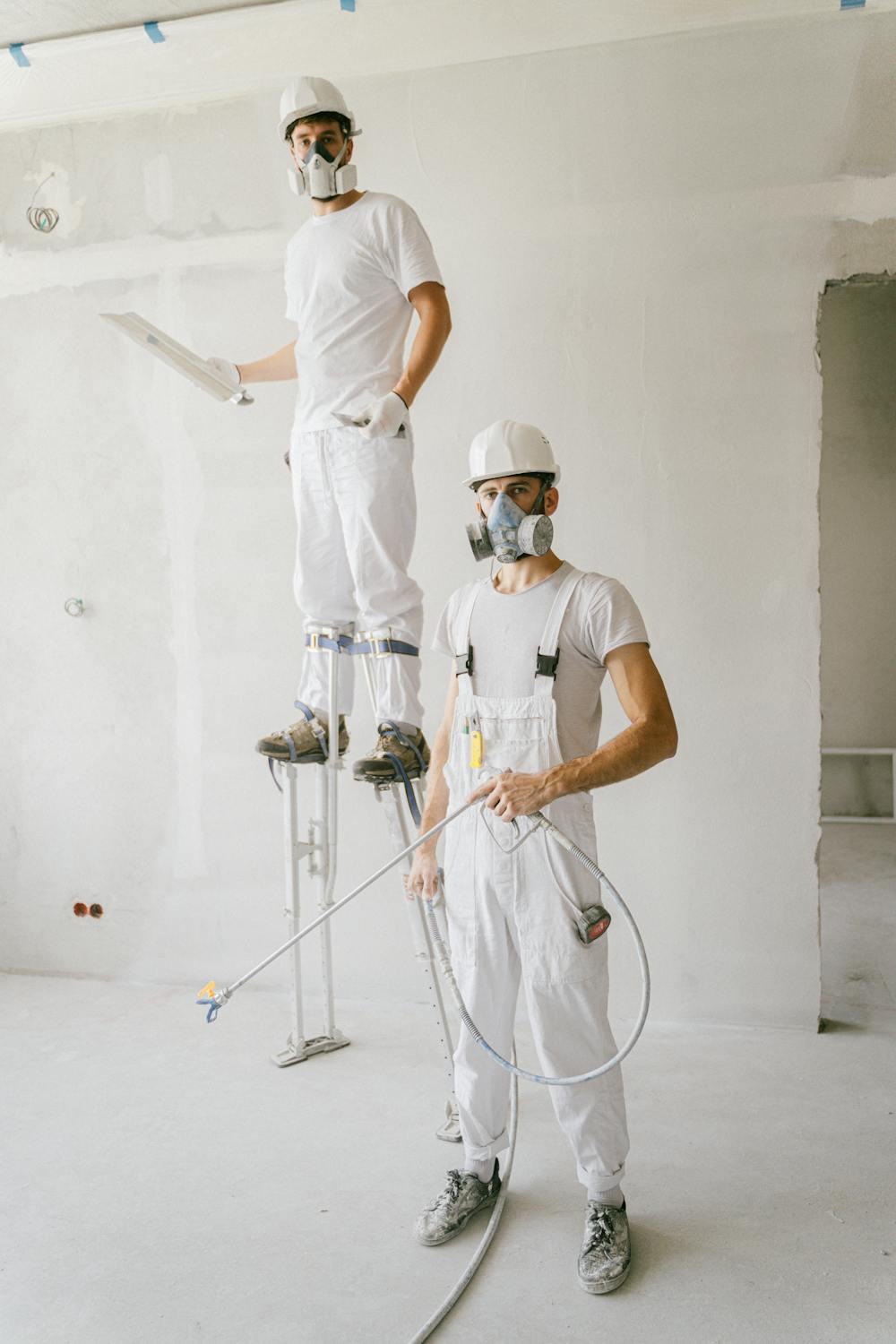Four tips to make you Paint your home like a Pro!
Any Homeowner who paints their own home wants it to look professional. Here are steps that professionals follow that help produce great results.
- Prep the surface you're painting
Few things are as important but also overlooked as prepping an interior wall or ceiling to be painted. One would believe a new coat of paint would make a room
look great, but surface imperfections will still show.
Imperfections that need to be repaired:
- Pin holes from posters and picture frames.
- Mount holes from TVs or shelving.
- Chipping paint from old paint jobs.
- Fuzz or small hairs embedded into the paint from previous paint jobs
- Cracks in the wall around door frames and windows.
- Cracks around nail heads that are close to the surface.
- Indentations in walls from door locks and furniture.
Most of the repairs for these jobs will start by filling in the holes and cracks with caulk or spackle and scraping away any excess with a putty knife till flat. The next step professional painters do is to sand away any bumps with very fine 220 sandpaper once the spackle is dry. Finally, make sure any baseboards are free of dust from sanding. This can be done with a vacuum or broom and by wiping down any surface with a damp towel.
- Tape off the trim and other areas you don't want to be painted
This is a critical step if you want straight lines where two different colors or finishes of paint come together. This is most common where the wall meets the ceiling and the baseboard or trim. These straight lines give a room a very clean look that gets noticed by guests.
While professional painters "cut" without masking off a room - their steady and practiced hand with a brush makes this possible. For the homeowner, it's best to use blue painter's tape to mask around the trim to get those clean lines. It will give you a much better finished product.
3. Use drop clothes to protect flooring and furniture from paint.
There’s nothing more frustrating when an arrant glob of paint lands on carpet or a couch. What was a quick paint job to brighten your home is now a race to get paint out of fabric. Drop clothes are the preferred method to prevent this scenario, but some drop clothes work better than others.
Here is what professionals use.
1. Brown paper. These come is rolls that can be rolled out onto flooring. The big benefit is that they lie flat and against the wall, and you won’t tangle your feet or ladder in them. They are easy to work over. The big drawback is that paint is not absorbed and doesn’t dry as fast, so wet paint can be stepped on and trailed through the house.
2. Drop cloth. This is your traditional heavy duty cotton canvas drop cloth. They are reusable and durable. They absorb paint well. Look for cotton canvas that has a tighter weave so paint won’t bleed through.
Which drop clothe is the best?
We use both sometimes. We use the brown paper against the wall for safety and convenience. Then on the inside we use a drop cloth to make sure we aren’t spreading paint all over the place.
- Apply Primer when needed
Primer is very similar to paint, but it’s designed to give you a blank slate to add your top coat. Think of it as a foundation for the top coat to adhere to.
You’ll want to prime in a few scenarios.
1. You are painting on bare drywall or repairs.
2. You are painting latex onto a surface that has oil-based paint (or vice versa)
3. You are painting a light color onto a darker color.
4. When painting in a high humid area like a bathroom.
5. When you change finishes from a higher sheen to a lower - like semi-gloss to eggshell.
6. When painting over stains or discoloration.
When priming a wall before paint keep in mind a few things.
1. Many manufacturers make paint + primer, many of which are excellent. They can help reduce painting time. - You don’t need to prime the whole wall. When covering a stain or small area, spot priming can be used locally to cover the spot.
3. You can buy tintable primer that will color match 50% of your top coat. This can reduce coats and give great results.
With these four tips you can more confidently tackle your home painting project and have it produce great results.

